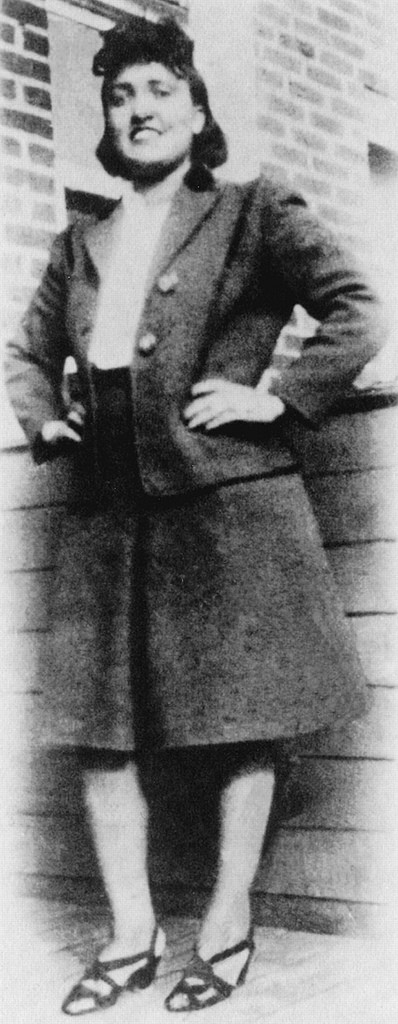When I downloaded the audiobook The Immortal Life of Henrietta Lacks, I didn’t know what I was in for. Sure, the story had come highly recommended, but it was also marketed as a work of scientific journalism—and I’m no scientist. Memories of the single biology course I took in college still give me nightmares. Nevertheless, I was drawn to the book; mostly, I’ll admit, by the smiling face of the woman on its cover.
At first glance, Henrietta Lacks’s life story isn’t especially interesting. She was a young wife and mother who died at 31 after a battle with cervical cancer. She left behind five children who would barely remember her, a husband she’d been married to for 10 years, and a sample of her cells.
But those cells far outlived the tragically short life of a black woman from Roanoke, Virginia—and they’re the reason Henrietta’s story lives on.
The Movie
The film adaption of Rebecca Skloot’s book is far from extraordinary. Oprah Winfrey gives a touching performance as Deborah Lacks Pullum, Henrietta’s youngest daughter. Rose Byrne tries her best to enliven the flat character of Rebecca, both the book’s author and also an integral part of Henrietta’s story. The rest of the cast isn’t memorable.
In the book, Henrietta’s tale is spun with well-timed scientific explanations and patient detours down narrative rabbit holes, all done with measured purpose. But these decisions don’t translate as well on-screen, so things feel a bit rushed and slightly confusing.
Nevertheless, watched in conjunction with reading this important work, I enjoyed seeing Henrietta’s story come to life on my television screen.
The Story
The Immortal Life tells the story of Henrietta Lacks, born Loretta Pleasant of Roanoke. By the time she died in 1951, her doctors had discovered something amazing about her cells. For years, scientists had been trying to figure out a way to grow cells in a lab. They’d taken samples from countless patients, only to watch those samples die shortly after collection.
But Henrietta’s cells didn’t die; they multiplied. And they did so at such an astounding rate that, if we laid them end-to-end today, they’d be able to wrap around the entire world twice. HeLa, as her cells were known, became a bedrock of scientific research, allowing medical advancements in cancer research, polio vaccinations, and gene mapping. Her cells even beat Neil Armstrong to the moon, as they were sent there to see how human cells would respond to space travel.
At first, HeLa cells were given out freely to scientists all over the world. But eventually, they were sold for hundreds of thousands of dollars and are still helping to pioneer groundbreaking research today.
Unfortunately, Henrietta’s family hasn’t profited directly from the sale of HeLa cells. In fact, they weren’t even aware they existed until years after Henrietta’s death. The Immortal Life of Henrietta Lacks is, in large part, the story of how Henrietta’s daughter Deborah goes on a quest with biomedical reporter Rebecca to discover the story of the woman behind the cells—a story no one had bothered to learn until Skloot took it upon herself to tell it.
Years later, not much is known about Henrietta herself, but the book and subsequent film detail what’s known, including her family history and stories about her children. Lacks’s cells can tell us all sorts of things about her family history, but Skloot relies on the power of narrative to get her point across.
The Lessons
There are so many ethical questions to wrestle with in The Immortal Life. Should we allow doctors to experiment on cell samples without our consent? Should a family be compensated when these samples are sold for profit? Is Henrietta’s story symptomatic of the medical community’s lack of respect for black lives in the 1950s and beyond?
All of those questions are worthwhile, and are brought up at one point or another in the film. But for me, the most incredible part of both the movie and the book is the power of science as it intersects with story. I slept through most of high school science, but I was fascinated by how my limited knowledge intersected with the life of this woman.
I love that the most durable cells scientists have ever been able to sustain belong to a strong and durable black woman. And Deborah loved it, too. She’s enthralled by the strength of her mother’s cells, and the importance of the work they’ve done and will continue doing.
The Immortal Life of Henrietta Lacks reveals that we’re fearfully and wonderfully made. God has so intricately crafted our bodies that even the smallest element of who we are—our cells—holds countless secrets and expansive potential. We’re created in the image of an eternal God, and Henrietta’s cells scream that life doesn’t end in death, that we have a purpose beyond ourselves.
Indeed, Henrietta’s life reminds us that God has a plan for our own life and its stories, whether they’re told by our children to our children’s children—or to the entire world.
Is there enough evidence for us to believe the Gospels?
 In an age of faith deconstruction and skepticism about the Bible’s authority, it’s common to hear claims that the Gospels are unreliable propaganda. And if the Gospels are shown to be historically unreliable, the whole foundation of Christianity begins to crumble.
In an age of faith deconstruction and skepticism about the Bible’s authority, it’s common to hear claims that the Gospels are unreliable propaganda. And if the Gospels are shown to be historically unreliable, the whole foundation of Christianity begins to crumble.



































